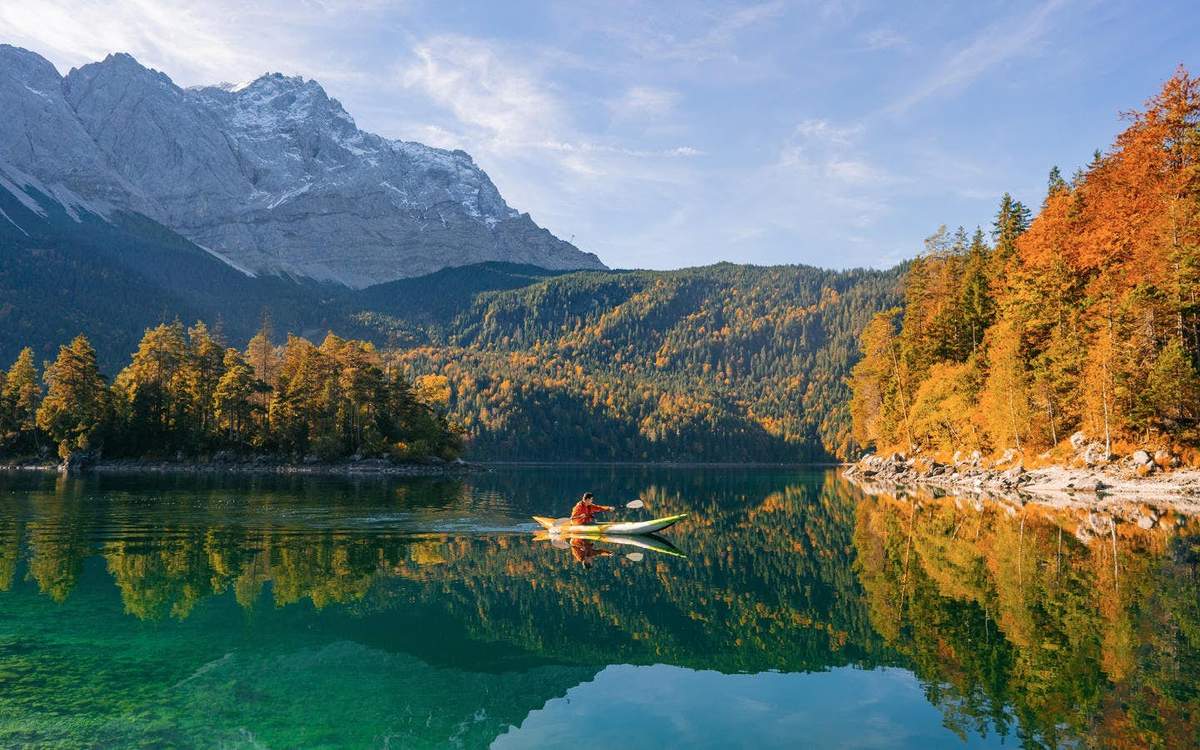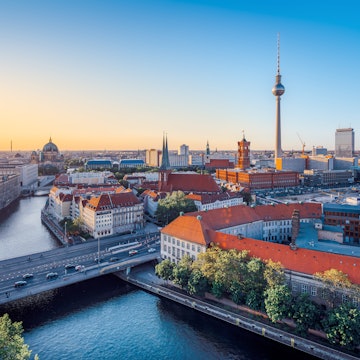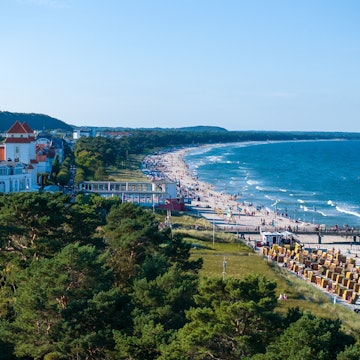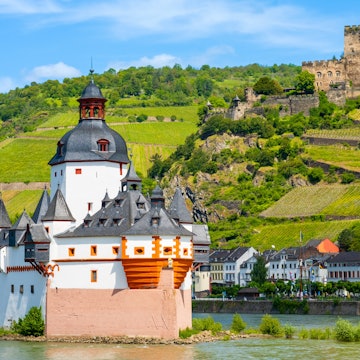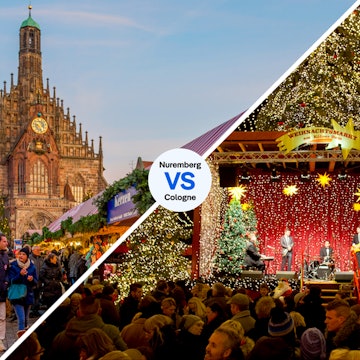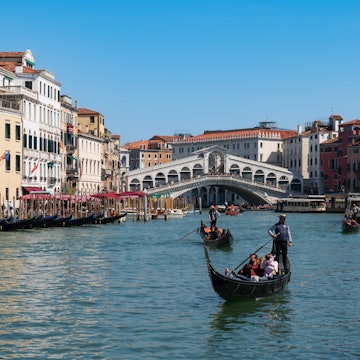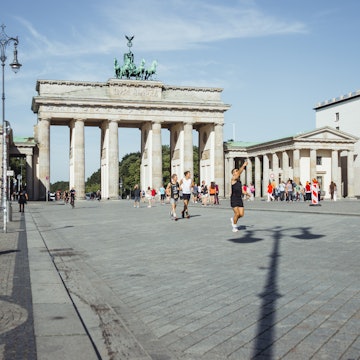

Hamburg is a fascinating and historic port city where there's always plenty to see and do. reach-art/Getty Images
Germany’s second-largest metropolis, Hamburg is one of Europe’s coolest, most characterful cities, but locals don’t make a song and dance about it – the city’s vibe is refreshingly unpretentious.
As the largest port in Germany, Hamburg more than merits its historic moniker, “The Gateway to the World.” The city has been hustling since medieval times and wealth from global trade in the 19th and early 20th centuries flooded its streets with grand buildings.
Highlights for visitors include vibrant subcultures, lively neighborhoods and a live music scene defined by rising stars (including, once upon a time, The Beatles). No, hamburgers weren’t invented here, but the dining scene is endlessly creative, and nightlife extends far beyond the infamous Reeperbahn red-light district.
No matter where you drop anchor, the city is a safe haven for letting good times roll. Here are our 13 favorite things to do in Hamburg.

1. Meander through Hamburg’s historic heart
Hamburg’s Old Town (or Altstadt) is the economic hub of the modern city – home to many impressive landmarks. Largely reconstructed after the devastation of WWII, the district’s wealth and status are immediately apparent as you stroll among its civic and commercial institutions.
This is where you’ll find the city’s biggest churches and most important museums. At its heart is Hamburg’s baroque Rathaus (Town Hall), one of Europe’s most opulent municipal buildings, renowned for its Emperor’s Hall and Great Hall. Another beautiful building is the Chilehaus, the crowning gem of the Kontorhaus District, an area full of handsome brick architecture.
Adjacent to Kontorhaus is canal-divided Speicherstadt, a UNESCO-listed district once devoted to maritime trade and dominated by enormous waterside warehouses. Don’t miss the Gothic Saint Peter's Church, with its whopping 123m-tall (404ft) spire.
2. Experience the vibrant energy of Spielbudenplatz Square in St Pauli
There always seems to be something going on in Spielbudenplatz at the heart of the St Pauli district. Come on Wednesday for the St Pauli Nachtmarkt, when food stalls take over the square, live bands play, and beer drinkers gather from late afternoon until evening. It’s a fantastic place to relax and take in local life.
All sorts of live music events fill summer evenings, and container bars open nightly. Twice a year, in May and September, the St Pauli Food Truck Festival serves tasty dishes from a wide range of cultures and cuisines. Street food trucks gather here on Thursday evenings throughout the year.
Planning tip: Twice a year, a lively flea market takes over Spielbudenplatz, with the dates changing annually. There’s also the lively St Pauli Christmas Market, running from mid-November to 23 December.

3. Celebrate St Georg’s thriving LGBTIQ+ scene
Hamburg has a thriving LGBTIQ+ scene that exemplifies the city’s inclusive spirit. The district of St Georg, affectionately known as the “Rainbow District,” is the lively hub for Hamburg’s active queer community.
Rainbow flags and vibrant street art flutter proudly along the Lange Reihe and surrounding streets. Standout LGBTIQ+ venues include the legendary Café Gnosa, a historic rendezvous point for queer folks since the 1970s, and Kyti Voo, one of Hamburg’s best cocktail bars.
Beyond St Georg, St Pauli venues like 136grad deliver leather-and-latex raves, while Wunderbar spins golden oldies on the decks.
Detour: To discover more of Hamburg’s countercultures, walk to Sternschanze – “Schanze” to locals – an area synonymous with left-wing activism and unbridled creativity. Independent boutiques, vintage stores, art galleries and cozy cafes abound here; take a wander and see what you discover.
4. Drink in Hamburg’s thriving craft beer scene
Hamburg is home to Europe’s most friendly and underrated craft beer scene. In recent years, the city has become a hotbed for creative brewing, with several notable players such as Bunthaus Brauerei, organic brewer Wildwuchs Brauwerk, and beer-sommelier-owned Kehrwieder Kreativbrauerei.
There’s plenty to get beer aficionados in a fizz. Start a beery night out at the Altes Mädchen (Old Girl) brewpub, where Ratsherrn craft beer is paired with creative modern plates, or drop into Landgang, a hip bar and brewery made out of shipping containers.
Planning tip: Drinking in public is legal in Germany, so feel free to taste-test a few bottles in one of Hamburg’s parks; Altonaer Volkspark and Lindenpark are both lovely spots to sit out. Germany’s Reinheitsgebot, or beer purity law (dictating only water, barley and hops should be used for brewing), isn’t followed strictly in Hamburg, so look out for more adventurous brews.

5. Catch a live performance at the stunning Elbphilharmonie
Perched majestically on the banks of the Elbe River in the redeveloped HafenCity district, the Elbphilharmonie (or Elphi for short) is one of Europe’s most exciting architectural statements. Constructed between 2007 and 2017, this Hamburg landmark perfectly harmonizes old and new.
The striking glass upper levels of the Elphi rise high above Hamburg’s skyline, supported by the solid brick walls of a restored warehouse. Inside, a one-of-a-kind concert hall boasts exceptional acoustics, guaranteeing deeply immersive musical experiences.
Even if you can’t catch a live performance, head inside to admire the stunning interior. Europe’s longest escalator climbs up to the Plaza, emerging onto a wrap-around balcony offering city and harbor views.
Planning tip: Check out the detailed architectural models of the Elbphilharmonie at the HafenCity InfoCenter in the Kesselhaus (a restored industrial boiler house). This is also the starting point for guided tours around HafenCity, providing insights into the district’s history and modern rebirth.
6. Hunt for treasures at the Flohschanze flea market
Set in a former slaughterhouse, Flohschanze is Hamburg’s best Saturday flea market. It’s a nirvana for thrifty trinket hunters and vintage junkies, with hundreds of vendors selling jumbled bric-a-brac, furniture, clothing and jewelry. After shopping, take a break at a nearby cafe before continuing the browsing along adjacent Marktstraße.
Planning tip: Be sure to check out the local vintage shops. Hip Cats is good for uber-cool vintage wear, from jeans to leather jackets and retro athletic wear, or you can feast on cake and waffles and browse femme fashions at Klamottensen, a cafe and secondhand shop. On Beim Grünen Jäger, Pick N Weight has blouses, leather bags, neon festival gear and more.

7. Check out the city’s quirky museums
Trust Hamburg to have some offbeat and awesome museums. Miniatur Wunderland houses the world's largest model railway, and miniature models of cities from across Europe. It’s a joy for kids, and even skeptical parents will quickly come around to its charms.
For a truly bizarre experience, head to Harry’s Hamburger Hafenbasar, a wunderkammer (chamber of curiosities) set in a converted former pub and stamp-and-coin shop, displaying an intriguing collection of peculiar objects. One for health-conscious travelers, the Deutsches Zusatzstoffmuseum (German Food Additives Museum) sheds light on the unhealthy artificial additives hidden in modern foods.
For those with an eye for the macabre, the Medizinhistorisches Museum (Medical History Museum) traces the evolution of medicine from the 19th century to the present, with plenty of eerie wax figurines and strange medical instruments.
8. Embrace Hamburg’s industrial nightlife at MS Stubnitz and Uebel & Gefährlich
The coolest of Germany’s maritime cities, Hamburg has a penchant for converting industrial relics into hip cultural spaces. The MS Stubnitz was an East German fishing vessel that entered service in 1964, before being converted into a subversive venue for concerts, purpose-built art shows, theater performances and more.
Another of Hamburg’s coolest venues is set inside the Flakturm IV Hochbunker, a high-rise bunker constructed to withstand air raids during WWII. Today, the bunker has been reinvented as Uebel & Gefährlich (“Evil and Dangerous”) – a delirium-inducing venue for trance and techno raves, with 360-degree views from its rooftop garden.
9. Groove at an open-air daytime rave
Hamburg gives Berlin’s club circuit a run for its money, and the city’s nightlife is constantly expanding into peripheral neighborhoods and disused industrial spaces. While Berlin is all about techno, the Hamburg scene embraces everything house.
Visitors can dive in headlong at lively outdoor parties pairing sunshine with groovy beats. Look out for events run by Magic Mansion and Cafe Soda, which both organize fantastic open-air daytime raves and other dance music events.

10. Take in a treasure trove of art at the Kunsthalle
The centerpiece of Hamburg’s dynamic arts scene is the Kunsthalle, spanning everything from the Renaissance to the modern age in two buildings linked by an underground passage.
The main building houses medieval portraiture, 20th-century classics, and significant works by Klee and Kokoschka, while other spaces display significant German works such as 19th-century landscape paintings by Caspar David Friedrich.
The Galerie der Gegenwart, a stark-white modern cube, is also located in the complex, showcasing contemporary, experimental German multimedia art.
Planning tip: About 1km (0.6 miles) west of the Kunsthalle, on the far side of the Alster Lakes, Dammtorpark and Planten un Blomen are two pretty parks that are popular spots where locals love to stroll and unwind.
11. Explore eerie church crypts beneath St Josef and St Nikolai
In 2011, a crypt containing the remains of roughly 350 people was unearthed beneath St Josef Kirche completely by chance. The mass tomb has now been renovated into an ossuary where visitors can view the bones of those buried beneath the church between 1719 and 1886.
Another crypt worth visiting lies under St Nikolai Kirche. With the exception of its tall spire, the church was mostly destroyed in WWII, but its underground crypt survived – today, it hosts an unflinching exhibition on Operation Gomorrah, the destructive Allied bombing of Hamburg in 1943.
Upstairs, a glass lift climbs to the top of St Nikolai Kirche’s 76.3m (250ft) spire, topped by a viewing platform that offers sweeping city views, with displays that explain the extent of the city’s wartime destruction.
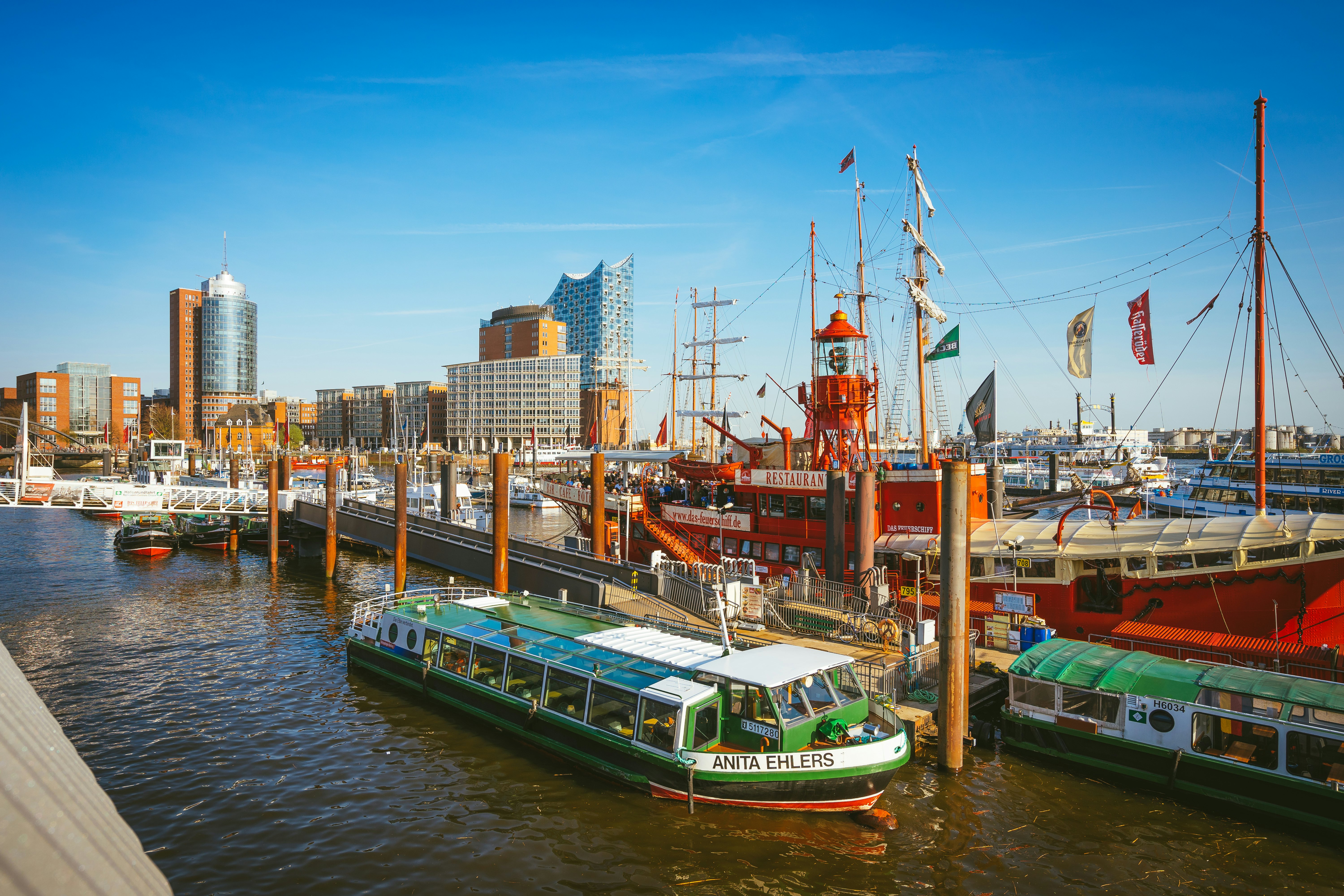
12. Tour the Port of Hamburg by boat
Harbor tours are a favorite activity for visitors to Hamburg. Just head to Landungsbrücken on the north shore of the Norderelbe and pick a boat that’s leaving when you want to set off. Another popular option is floating past eye-catching buildings on a cruise around the Alster Lakes; trips leave from Jungfernstieg at the south end of Binnenalster.
Evening harbor trips with Abicht Cruises provide a chance to see the city’s warehouses illuminated at night, while Barkassen Ehlers offers canal tours and special trips in vintage boats.
To take in the sights via the water, Maritime Circle Line runs a hop-on, hop-off boat service connecting Hamburg’s maritime attractions, including the interesting Internationales Maritimes Museum.
For something a little different, HafenCity Riverbus offers a 70-minute tour of the city in an amphibious bus, with 40 minutes spent on land and 30 minutes on the Elbe River. However, the commentary is in German only.
Planning tip: Buy a Hamburg Card for free public transport in the city and big discounts on boat cruises.
13. Munch on fischbrötchen, Hamburg’s most popular street food
The beauty of the Hamburg fischbrötchen (fish sandwich) lies in its simplicity. Locally caught fish, typically herring or cod, is filleted, seasoned, then battered and fried to golden perfection, before being served in a fresh bun.
Toppings depend on the kiosk, but typically include thinly sliced onions, pickles, lettuce and remoulade sauce. It’s a portable and satisfying budget meal for refueling while sightseeing, and a popular fill-up after an evening of bar hopping.
One of the best places to sample the city’s favorite sandwich is Fischbrötchenbude Brücke 10, which serves versions with bismarck (pickled) or matjes (brined) herring at outdoor tables. Kleine Haie Grosse Fische is a St Pauli institution, selling fish sandwiches till 2am on Thursday, 3am on Friday and 4am on Saturday. For a sit-down fish sandwich with port views, try Fischerhaus.
This article was adapted from Lonely Planet’s Germany guidebook from May 2024.






